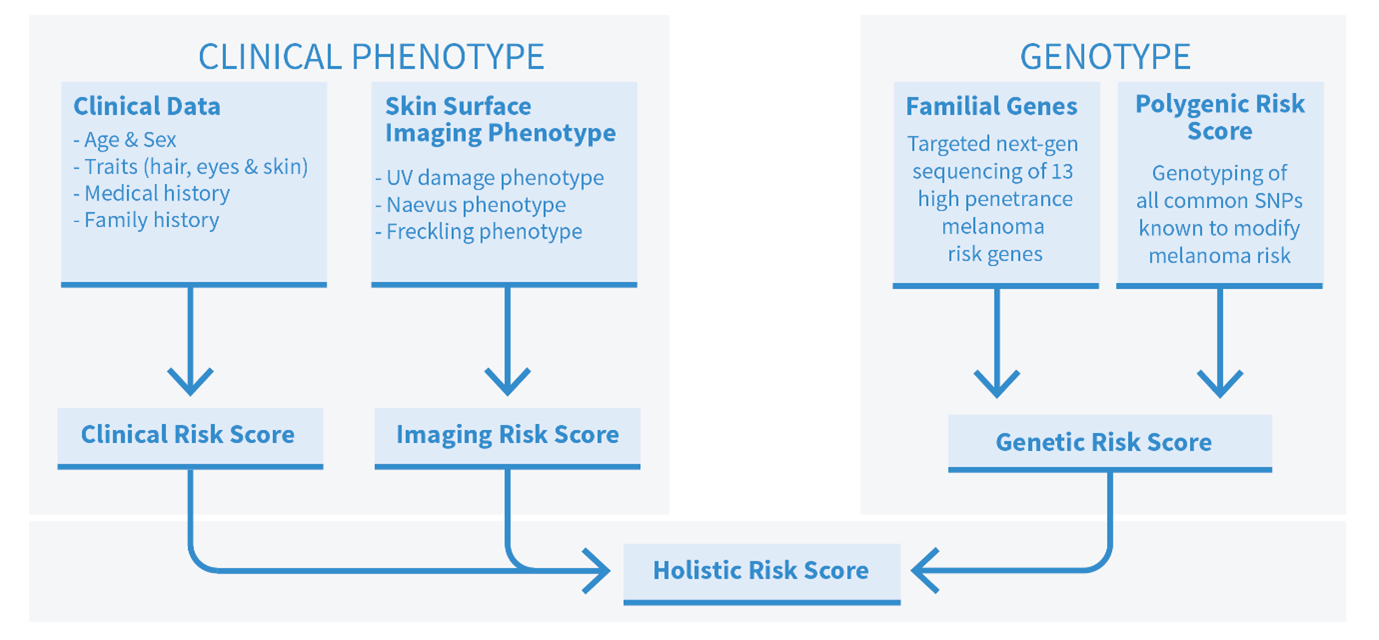Melanoma is the third most common cancer in Australia, but Australians have widely variable risk of developing melanoma. This makes it hard to recommend a one-size-fits-all approach to early detection.
When detected early, many melanomas can be completely cured, but encouraging everyone to be screened regularly means many melanomas are overdiagnosed, meaning they are so slow-growing that they would never have caused a problem. From a public health level perspective, these patients experience unnecessary excisions and worry, but on an individual level, most patients are understandably keen to follow the cautious “if in doubt, cut it out” approach. Either way, the cost to the health system is substantial.
On the other hand, restricting screening too much risks missing melanomas at an early stage, which then go on to metastasise and need expansive, high side-effect, and often unsuccessful treatments.
One approach is to generate risk scores, so that people can be directed to a level of personally suitable level of screening.
Researchers in Australia have developed two online risk calculators that predict your risk of developing melanoma – in the next 3.5 years for the QIMR Berghofer Medical Research Institute calculator (https://publications.qimrberghofer.edu.au/Custom/QSkinMelanomaRisk) and lifetime risk in the Melanoma Institute Australia calculator (https://www.melanomarisk.org.au/FirstMelLand).
The calculators were developed from studies of Australians over age 40, so they may not be as accurate as for people living in other countries or younger people. They are also intended for people who have never had melanoma – people already diagnosed with melanoma have a much higher risk of having another one. MIA has a separate risk calculator for people with a prior melanoma (https://www.melanomarisk.org.au/SubMelLand).
The risk calculators use clinical and demographic information like where you live, whether you have had other kinds of skin cancer, how easily you tan, whether you use sunbeds, what your natural hair colour is, and how many moles you have. These are all independent predictors of melanoma risk, but together they can give a much more accurate prediction.
Since number-based risk predictions can be hard for people to grasp, the QIMR Berghofer calculator provides a five-category scale: very much below average risk, below average risk, average risk, above average risk and very much above average risk. The MIA calculator shows lifetime percentage risk with an infographic of 100 people.

Image 1: results pages from two publicly available melanoma risk calculators.
iToBoS plans to expand this kind of clinical prediction into a holistic risk prediction, which includes genetic risk and a whole-skin surface phenotype, to help clinicians not only decide on a person’s overall risk, but also set each mole examined into the context of the patient’s overall risk level. This should reduce excisions of healthy but slightly strange-looking moles in people with low melanoma risk, while maintaining higher levels of caution in higher-risk patients.

Image 2: elements of a holistic riskscore.
Katie Lee - University of Queensland.
